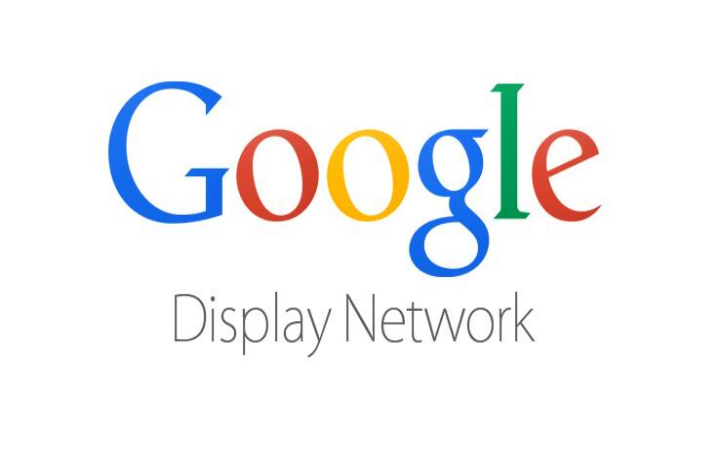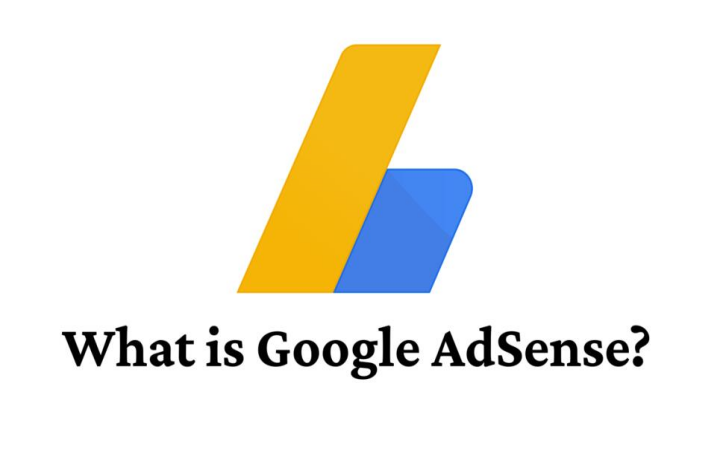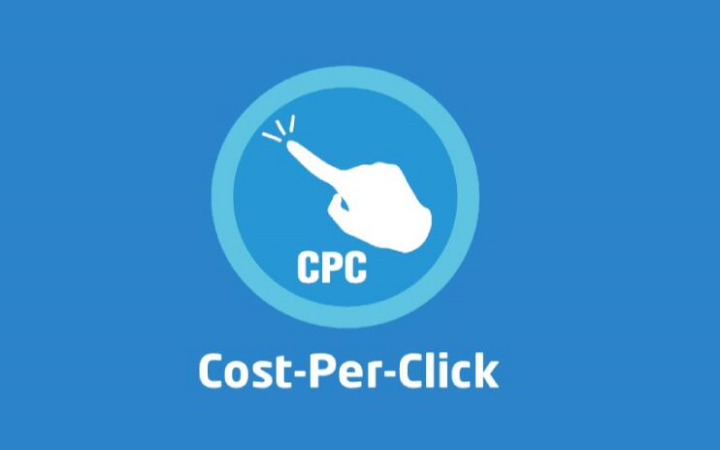If you’re doing digital marketing, or you’re a small business owner trying to get your business online, you have probably heard about the Google Display Network (GDN). But what is it, and how does it fit your company? This blog focuses on comprehensively introducing GDN, stressing its strengths and key utilities, and providing a direction on how this communication tool can be used efficiently to meet your marketing goals.

What Is The Google Display Network?
The Google Display Network is a huge cluster of more than two million websites, videos, and apps where your ads can be posted. Unlike Google Search Ads, which are almost exclusively text-based and are shown as posts on search results web pages, Display Ads are dynamic and can be seen on various platforms across devices. These ads can be a mixture of text, banners, or even rich media; thus, the trick lies in the marketers being more creative and interactive to attract attention.
What is the Use of the Google Display Network?
The issue is not just why to use GDN; instead, it is a good question to be asked for others. There are many advantages of GDN for any business that endeavors to enhance its digital track:
Wide Reach
GDN is a platform that has access to over 90% of all global internet users, and hence, it is second to none in terms of outreach. GDN allows you to conduct campaigns both locally and globally, broadcast the image you want to present to the whole world and specify the proper target groups that consume the goods or auxiliary services offered by your company.
Economical Advertising
GDN has invented attractive ways to attract clients by proposing various pricing models like cost-per-click and cost-per-thousand-impressions, which are a good advantage for companies in terms of adjusting their budgets. Therefore, midsized businesses are also going the display route, paying less money than luxurious brands.
Targeted Advertising
Even though GDN’s reach is vast, it is also characterized by sophisticated targeting options as well. You can concentrate on people with certain demographics, hobbies, and search behavior to attach the ads to the audience that would most probably engage with your brand.
Visual Storytelling
Standard display ads in the GDN don’t rely solely on words. Advertisers could integrate captivating images, videos, and interactive content to draw the eye of the potential customer and communicate the brand message more effectively. This unique feature is highly beneficial to the brands, especially the ones with fabulous products or those who prefer to tell interesting stories to the public.
How Does the Google Display Network Work?
The GDN is based on the principles of contextual targeting and remarketing. What is contextual targeting? This praises the ads by the relevant keywords and topics you choose for the website. In contrast, remarketing allows you to target people who have already used your website or app with your ads.
In the Google Ads Manager, you are required to create a campaign and filter it out with specific domain selections or targeting conditions. Therefore, if Google algorithms can pin your ads to relevant content around its network, your ads will appear. This way, your message is ensured to get to the audience that will most probably be interested in your brand.
How Google Display Ads Reach Your Target Audience
The GDN has the most tenacious feature of its own, which is the power of selecting the audience you want to display to, and it includes the following highly sophisticated facets:
- Demographic Targeting: Make ads appropriate for an individual’s age, gender, and household income.
- Interest Targeting: Address persons hooked in with their hobbies and likes through their surfing activities.
- Behavioral Targeting: Advertise to people who are already well into the purchasing process through the search behavior or by completing the purchase of a product in the past.
- Placement Targeting: List down what sites or channels in GDN you want your ads to appear.
- Topic Targeting: The Topics you select would almost exclude relevant but separate matters to you and thus might not be the best choice.
- Remarketing: Send re-targeted ads to your previous visitors and get them interested enough to return to your site.
Creating a Google Display Ads Campaign
Define Your Goals
Before launching any project, distinguishing targets that are lucid and measurable is the fundamental process. Do you wish to draw attention to your brand, drive more website visits, or create sales leads? Your drive for the objectives will determine your strategy and also allow you to measure the success of your campaign. Stick to SMART criteria to ensure your objectives are very well thought out and implementable.
Choose Your Audience
One of the best things about the Google Display Network is the fact that it helps the right demographic the most. The first thing is to write a picture of your audience through the following: their age, sex, interests, etc. Google Ads offers such targeting options as:
- Affinity Audiences: In this method, the target is the individuals who have some interest in your product or service that is consistent with the business model of your company.
- In-Market Audiences: To present your products to persons who are currently doing individual product research, which is identical to the kinds of products you produce.
- Remarketing: This is a very important tool enabling you to re-capture the people who have visited your site in the past and got away without converting.
Set Your Budget
To maintain your campaign budget and ensure ROI, setting a budget that fits into the campaign is crucial. Google Ads is a flexible platform and allows its users to bid in different ways:
- CPC: You will pay only when a visitor clicks on the displayed ad from a campaign managed with a CPC payment method.
- CPM: A payment of dollars will solely be based on a thousand ad impressions or exposure to the end-users of the app.
- CPA: Acquire the space just when the entire cycle has been followed through lead generated, prospect reached, quote/ contract agreed as a deal closes. Thus, a qualifying purchase or sign-up takes place, and the payment is eventually made.
Calculate your daily and life budgets, keeping in mind the targets you set and also the possibility of presenting them over the Google Display Network.
Design Your Ads
- Visual Appeal: Include eye-catching images and graphics that are in line with your brand.
- Clear Messaging: Describe your key benefits in a concentrated way. Your CTA should be convincing.
- Consistency: It is very important to keep the style and tone consistent with all your ads to ensure brand memory.
You should try testing different versions, and later, you will realize which kind of ad your audience likes the most.
Select Your Placements
With placement targeting, you have the option to handpick the specific websites, pages, or channels on which your ads will be shown. This type of precision brings different advantages to you as a marketer. It has one of the advantages of being able to target individual websites that are specifically relevant to your product or service. Identify choices for yourself and apply the use of Google’s location reports to craft your sales funnel for a while.
Launch and Monitor
Once you’ve set everything, it’s time to launch the campaign. Still, this requires constant monitoring and optimization for the strategic success of the campaign. Check your main statistics, such as impressions, clicks, and conversions, constantly. Using Google Ads’ built-in analytical tools, evaluate the effectiveness of the ads and determine which parts need to be optimized.
How to Optimize Your Ads for the Google Display Network
The best way to see how well your GDN campaigns are performing is to try these optimization suggestions:
Understanding Targeting Options
Leading is the tactic that is used mainly for GDN ads for advertising through the Google Display Network. GDN offers a plethora of targeting dimensions that you can use to reach the right audience at the right time via various targeting options. These are the ways you can reach your target audience that way:
- Demographic Targeting: Adjust the ads you want based on age, gender, the situation of the parents, or how much is the income of the household.
- Interest Categories: Target users on the grounds of their interests and online activities.
- Topic Targeting: Direct the viewers by placing your ads across the web under the appropriate topic.
- Placement Targeting: Select specific websites or apps on which your ads will appear.
- Contextual Targeting: Automatically display your ads on the web page with relevant content using keywords or topics.
- Custom Intent Audiences: Choose users by the details of certain keywords and the URLs they’ve searched or visited.
Choosing the Right Ad Formats
Choosing the right GDN ad formats, among a variety of formats you have, is a big step forward in the process of properly addressing all your branding needs. Take a look at these popular ad formats that will turn your strategy into a winning one:
- Responsive Display Ads: The ads are very different from the others as they automatically decide how to adjust to changes while fitting into the ad spaces that may be available.
- Banner Ads: Often a favorite choice, these simple, uniform, and sometimes moving pictures are the most memorable of all; they are perfect for marketing a brand.
- Video Ads: Conversational and energetic, video ads hold viewers’ attention within the first few seconds, so they are the most suitable tool for quick brand messaging to the audience.
Effective Bidding Strategies
Bidding strategies are the main factor in terms of which should be the most of what you are willing to pay the click or Duracell. Here are a few of them you may choose from:
- Manual CPC Bidding: You can set the bid per click manually on your own, though it is a task that requires you to monitor regularly.
- Enhanced CPC: Tunes your manual bids based on the chances of getting a job done.
- Target CPA (Cost per Acquisition): While not necessarily implementing your offer to any client, a bidder will get a conversion paying an acquisition cost, maybe this bidder who applied this strategy.
- Target ROAS (Return on Ad Spend): Since ROAS is good, the focus is on increasing earnings from advertising.
You have to determine if you will choose as the primary one of the strategies which you have here and correct your account as you feel will increase performance.
Importance of Audience Segmentation
Audience division is a must for message customization and optimized interaction. By dividing your audience into distinct groups, you can deliver personalized content that can resonate with each of them. You can utilize analytics and audience insights from Google to identify key segments such as:
- New Visitors vs. Returning Customers
- High Spenders vs. Budget-Conscious Shoppers
- Engaged Users vs. Casual Browsers
Creating individual ad messages for every segment will be a better solution to this problem. It particularly nestles that you make sure you have at least a few of the segments covered, and you will, therefore, be able to address their needs and preferences by altering your advertising copy.
Leveraging Remarketing
This method has allowed you to get in touch again with people who have been to your site or have taken any action on your app. Such a move guarantees that your brand prevails in the minds of users and they come back to your website. You can even increase the conversion rate of these frequent visitors. The following steps will get you started with remarketing:
- Creating Custom Audiences: Define the audience in terms of specific user activities such as cart abandonment or visits to certain pages of the website.
- Dynamic Remarketing: Display personalized ads of products or services that users have viewed on your site.
- Cross-Sell and Upsell Campaigns: You can offer current customers related products or better versions of what they bought.
Remarketing indeed offers itself an effective means to ramp up the conversion percentage and to get over cart abandonment.
Using Visuals Effectively
The advertisement visuals are the ones that matter when it comes to catching the viewer’s eyes and getting them to read your ad. Here are some of the best practices:
- High-Quality Images: Show authentic and high-quality images that your brand communicates.
- Consistent Branding: Your visuals and typography should match your brand’s color scheme.
- Simple Messaging: Write very short texts that will be attention-grabbing and readily transmit your message.
- Call-to-Action: You can insert a striking, prominent CTA that will lead your users to the intended action.
Images are powerful to the extent that they change your customer’s feelings towards your business. Therefore, they are also transformed from just an attention corner to a brand you already know.
Optimizing for Mobile Devices
More than 90% of internet traffic is transferred using mobile devices, which has become a crucial entity in shaping the entire online internet experience. This shows the importance of optimizing for mobile web user experience. Since mobile ads are accessed through mobile phones, regardless of the size of the screen, they are important. Following are the main key factors that can be listed as below:
- Mobile-Friendly Designs: Format the ads correctly for smaller phone screens.
- Fast-Loading Elements: Streamline things like images and scripts to help get files downloaded and displayed quicker.
- Touch-Friendly CTAs: Rather than complex CTAs where users might need to hover or tap twice, make it a touch-friendly experience. Mobile optimization will not only reach a wider audience, but also improve the user experience on mobile devices.
Role of A/B Testing
On printed advertisements and commercials, split tests can also be conducted, which allow a particular one to revise your campaigns based on the results of the research. Using the insights that you have gained from data, you can fine-tune your ads using A/B testing. Perform A/B tests by:
- Testing Different Ad Elements: Try a lot of variants of headings, visuals, calls to action, types of ads, etc., and see which one performs better.
- Gathering Data: Look at the indicators of the promotion of the products or services using the advanced analytics software as the data source and concealed variables as the research method to identify which version works well.
- Iterating Based on Results: Use the results to correct your ads, which will help you develop much more profitable strategies in the future.
Performance Tracking
If you would like to kænav the success of your GDN campaigns, it is necessary to monitor indicators such as:
- CTR: This is a measure of how much a person clicks an ad after they have seen the ad.
- Conversion Rate: This indicates the percentage of users who have taken the desired action after clicking.
- Cost per Conversion: This represents the price at which one’s customer acquisition cost is computed.
It would help if you utilized such instruments as Google Analytics and Google Ads to take notes on the progression of these medians and get more helpful information about your advertising campaign performance. The regular examination gives you a chance to make the right decisions and tees you up to adjust your strategy to get better results.
GDN vs. Other Advertising Platforms
Comparison between GDN and other digital advertising platforms like Facebook or LinkedIn reveals some advantages:
- Visual Impact: GDN’s preference for presenting visual over textual information can be more effective in attracting the user.
- Broader Reach: Typically, GDN comes out to be the king in terms of audience size as it has access to a greater number of websites.
- Versatile Ad Formats allow for more creativity in comparison to some social media platforms with limited options.
In any case, you must point out the specific objectives you are aiming for and the target audience that suits your requirements; otherwise, the benefits will be very different.
Final Thoughts
The Google Display Network is a great tool for digital marketers and small business owners who want to grow their businesses and attract a larger number of people. You can achieve the results of driving successful campaigns by using the facilities and understanding the system. Are you planning to transform your business through advertising? Then, make sure to take advantage of this out, GDN, and witness your business thrive.
Also, if you need any more information and a detailed guide, no need to worry about that. You can either go through our additional materials or contact our team of professionals. Embrace GDN and completely revolutionize your digital marketing strategy!


